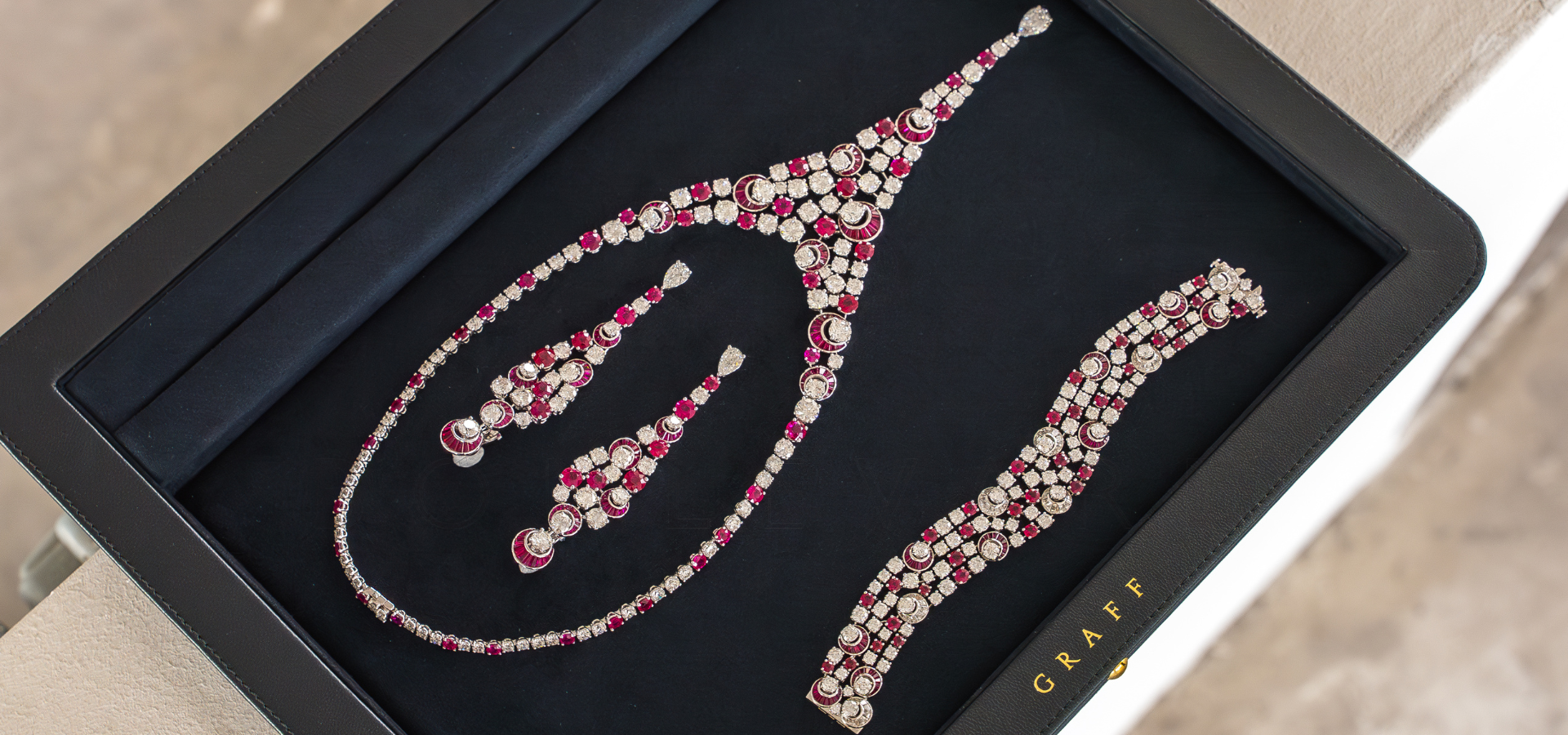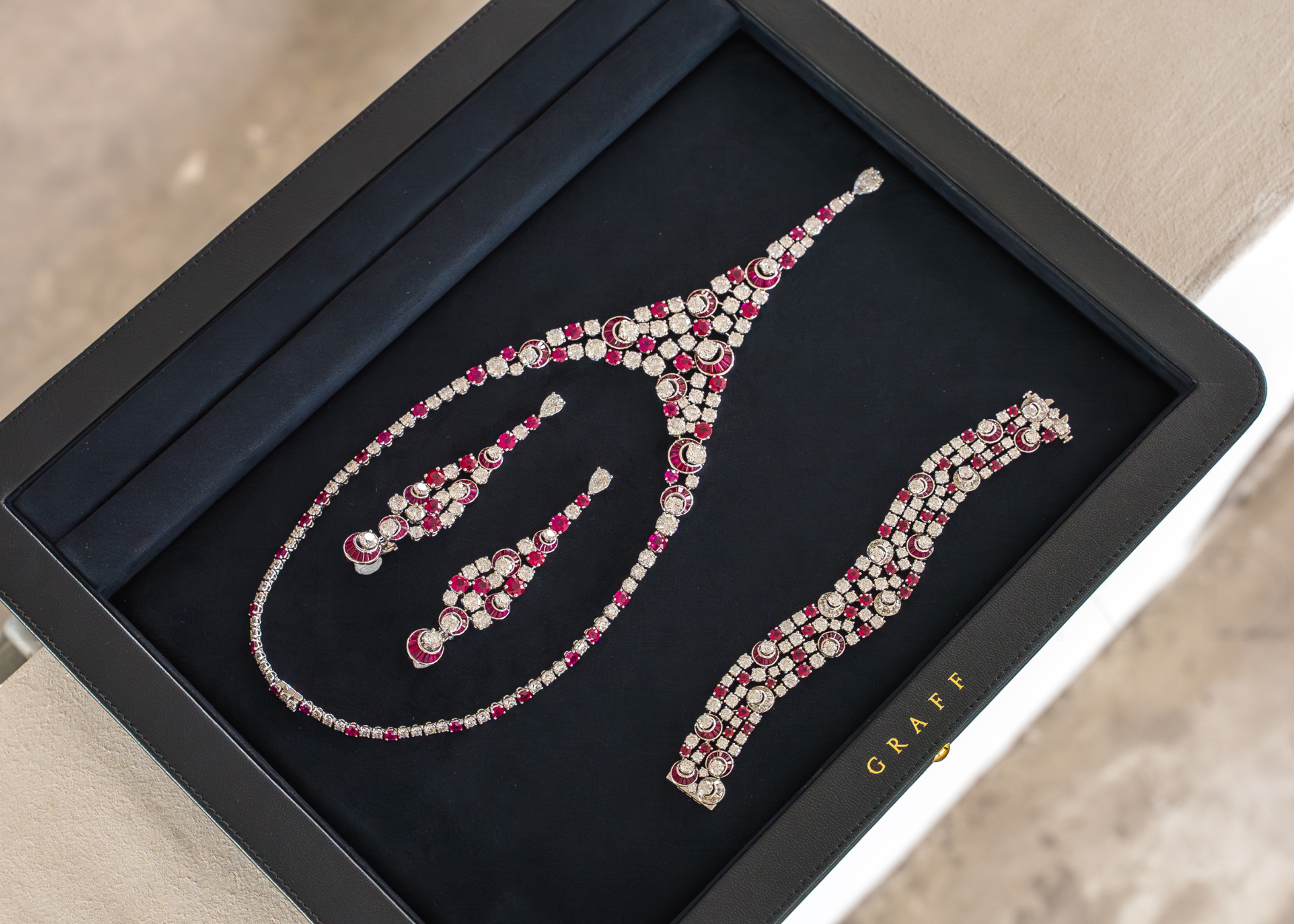Chasing rainbows: Coloured gemstones are taking high jewellery collections by storm
by Karishma Tulsidas
Photography by Kevin Khng
From fiery black opals to neon-blue tourmalines, a rainbow of vibrant gemstones is taking centre stage in high-jewellery collections – and collectors are paying attention. We explore what’s driving this explosion of coloured gemstones…
Shot on location at The Super-Penthouse, Parkview Eclat, Orchard.
Throughout history, wars have been waged and allies have turned bitter enemies just for the sake of a gemstone. There’s no denying the appeal of a precious stone; in the pages of Boulevard, we have explored how diamonds, emeralds, rubies and sapphires continue to intrigue jewellery lovers. We’ve also explored how the value of a stone correlates, typically, with its colour, rarity, provenance and size. But there is one factor that’s rarely spoken about, that drives demand – and that is the power of marketing.
Given that there are more varieties of gemstones in the world than there are colours in the rainbow, what often sets a gemstone apart is the marketing machine behind it: Diamonds catapulted to fame when De Beers launched its ‘A diamond is forever’ tagline, convincing generations of lovers that a rare stone could encapsulate commitment and affection. Kunzites and morganites became famous when Tiffany & Co. put their heft behind the stones.
In recent years, these efforts have increased considerably, and jewellery lovers and collectors are now discovering the full spectrum of coloured gemstones. Van Cleef & Arpels, for example, has set up L’École in Paris and Hong Kong, where it runs educational workshops about topics such as craftsmanship, history, and specific stones. Then, of course, there is the easy proliferation of information on social media, highlighting under-the-radar gemstones.
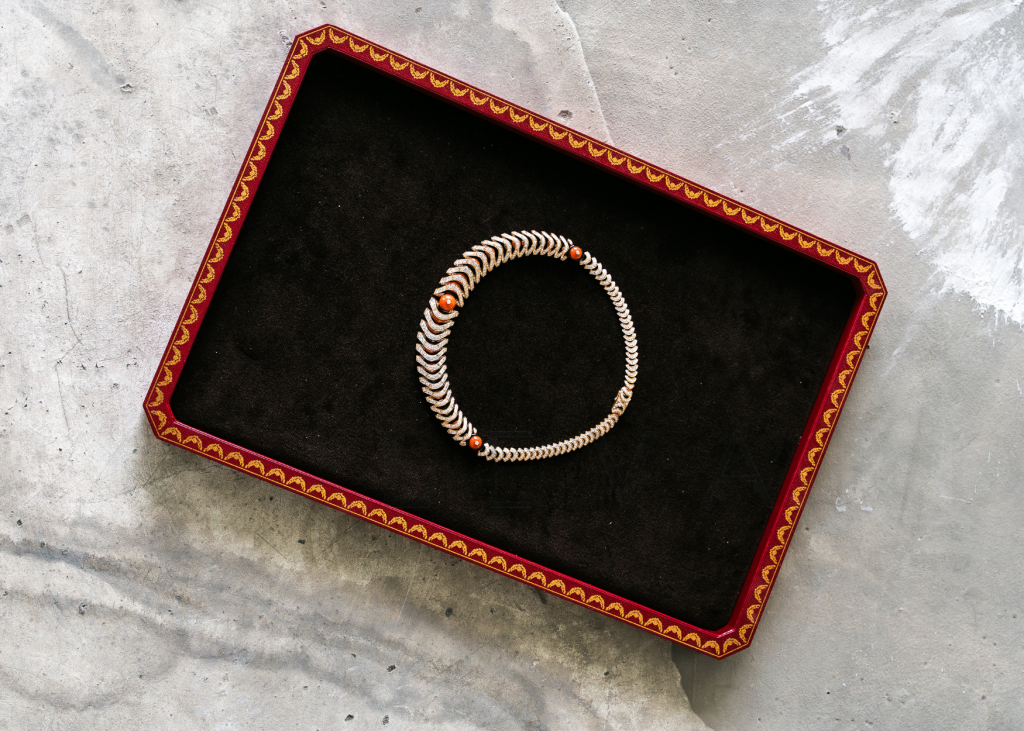
‘Voltea’ necklace with coral beads, set with onyx and diamonds, by Cartier.
Cristel Tan, the international specialist for jewellery at auction house Phillips, concurs that there has been growing interest in coloured gemstones. “Collectors may have already collected the big four (diamonds, emeralds, rubies and sapphires), and they now want to develop and grow their collection. They have wider knowledge, and other people too are starting to talk about these gemstones.”
Apart from the increased education, there is also a trickle-down effect from the high- jewellery collections launched by maisons such as Cartier, Boucheron, Chaumet, Bulgari, and others. High jewellery has always signified top echelon of jewellery-making; it’s where the maisons showcase their incredible savoir-faire and craftsmanship, as well as their design and creative prowess. But it’s also where they flaunt the show-stopping stones they’ve been able to get their hands on. And in recent years, there’s been a significant shift to rarer tourmalines, opals, spinels and more, signalling that these gemstones are valuable and worthy of collecting. This is a trend that Tan has noticed as well, as she mentions that an increasing number of collectors refer to high-jewellery collections when asking for specific stones.
She gives the example of Van Cleef & Arpels’ ‘Treasure of Rubies’ collection, launched in 2019. “Even people who are not interested in gemstones found it quite educational, and they were more interested to know about Burmese rubies, ‘no heat’ stones, and the rarity of these gems.”
Pushing creative boundaries
But beyond the macro factors of education, awareness and marketing, coloured gemstones are also highly desired because they are versatile, allowing jewellery houses to push the boundaries of design and creativity. Much like an artist relying on her colour palette to create a work of art, coloured gemstones, too, allow for freedom of expression. Take Van Cleef & Arpels’ Ballerina clips, which utilise the spectrum of colours to emulate the dancers’ elaborate outfits.
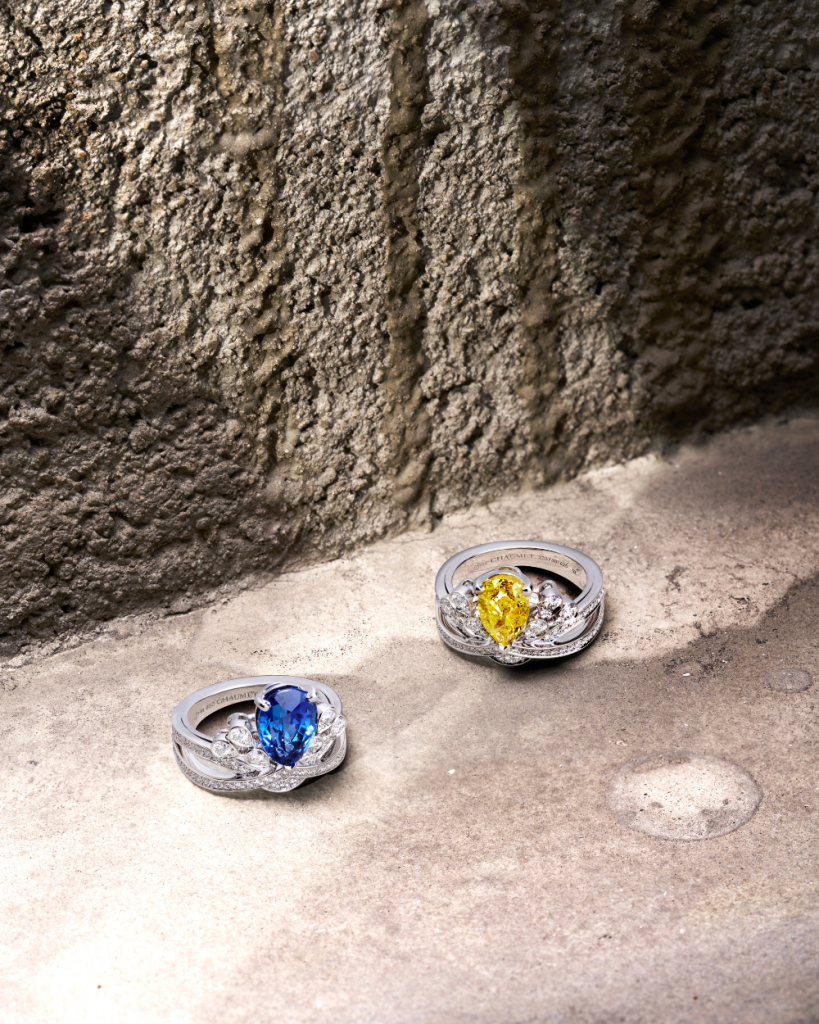
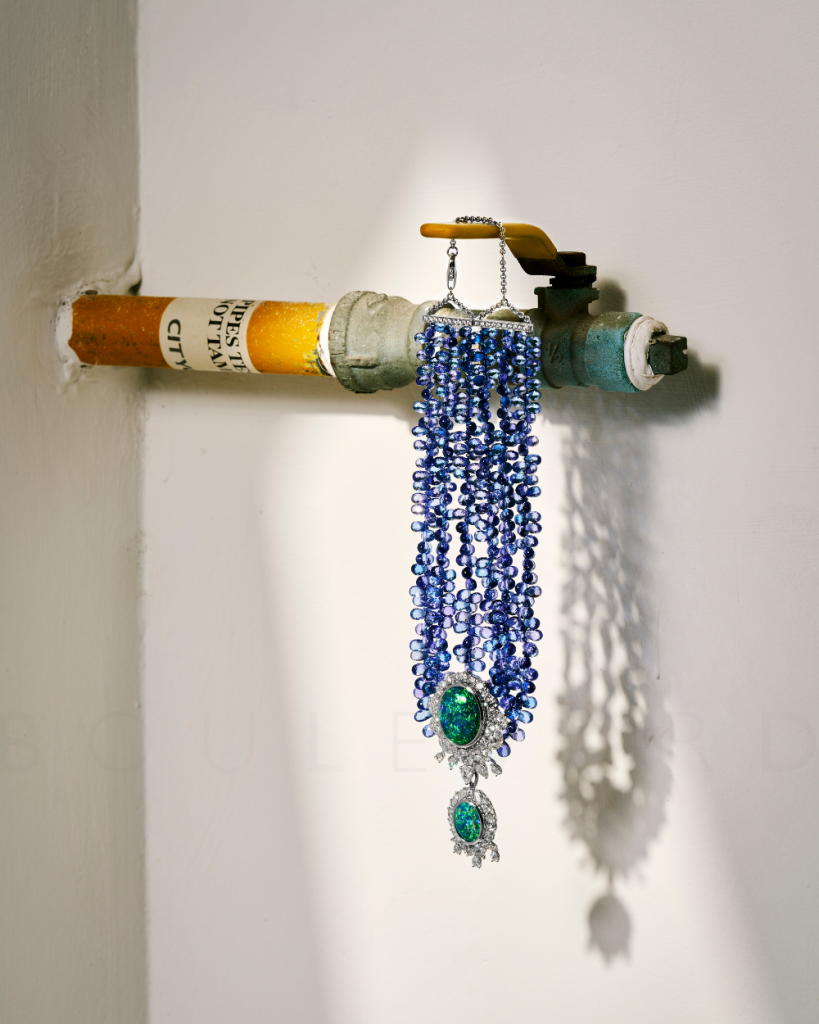
Left: ‘Aigrette Imperiale’ rings set with a yellow diamond, sapphire, and diamonds, by Chaumet. Right: Necklace with tanzanite beads, set with opals diamonds, by Chopard.
Then, you have Cartier’s latest high-jewellery collection, called ‘Nature Sauvage’, which sets rubellites, onyx and aquamarines alongside emeralds, diamonds and sapphires to capture more fully the form and silhouettes of wild beasts of the jungle.
The Schlumberger collection at Tiffany & Co. relies wholly on a wide palette of coloured gemstones to breathe new life into the visionary artist’s designs. Creatures of the sea, air, and the land, flowers and plants have been brought to life by a vivid spectrum of tsavorites, aquamarines, spinels and more.
As Victoria Reynolds, chief gemmologist of Tiffany & Co. says, “The future of coloured gemstones in high jewellery has never been brighter. Gemstones have been with us for thousands of years – think Cleopatra and emeralds, Marco Polo and sapphires – and they continue to grow in popularity, as clients increasingly seek unique gems. With their vast range of colours, shapes and textures, coloured gemstones offer endless creative possibilities, allowing designers to push boundaries and create one-of-a-kind masterpieces that resonate emotionally with our clients.”
Reynolds continues, “All coloured gemstones, including rubies, emeralds and sapphires, are unique and challenging to source due to their variability in colour, clarity, and size. However, each one offers us tremendous opportunities to shine in our bespoke designs, which allow for greater creativity and personal connections with our clients.”
Evaluating a coloured gemstone
Evaluating a coloured gemstone is not as straightforward as a diamond. The most important consideration is undeniably colour: its intensity, saturation and uniqueness. The preference for colour is subjective as well. While certain criteria – like a specific purple for tanzanites, and vivid neon-blue for Paraíba tourmalines – influence desirability, personal preference also plays a key role. Different stones also appeal to both genders. Says Phillips’ Tan, “It’s like clothes: the more feminine stones appeal to a feminine demographic, while darker stones like alexandrites, because they’re quite saturated and have a colour-change element, are not necessarily feminine.”
She adds, “We do urge people to collect not necessarily based on the certificate; they need to see the stone, the saturation, the various factors.” Of course, size matters as well. The rarer the stone, the more challenging it is to find a large one. As Tan says, “There is an increasing number of collectors who are interested in a good size, as well as rare and collectable stones.”
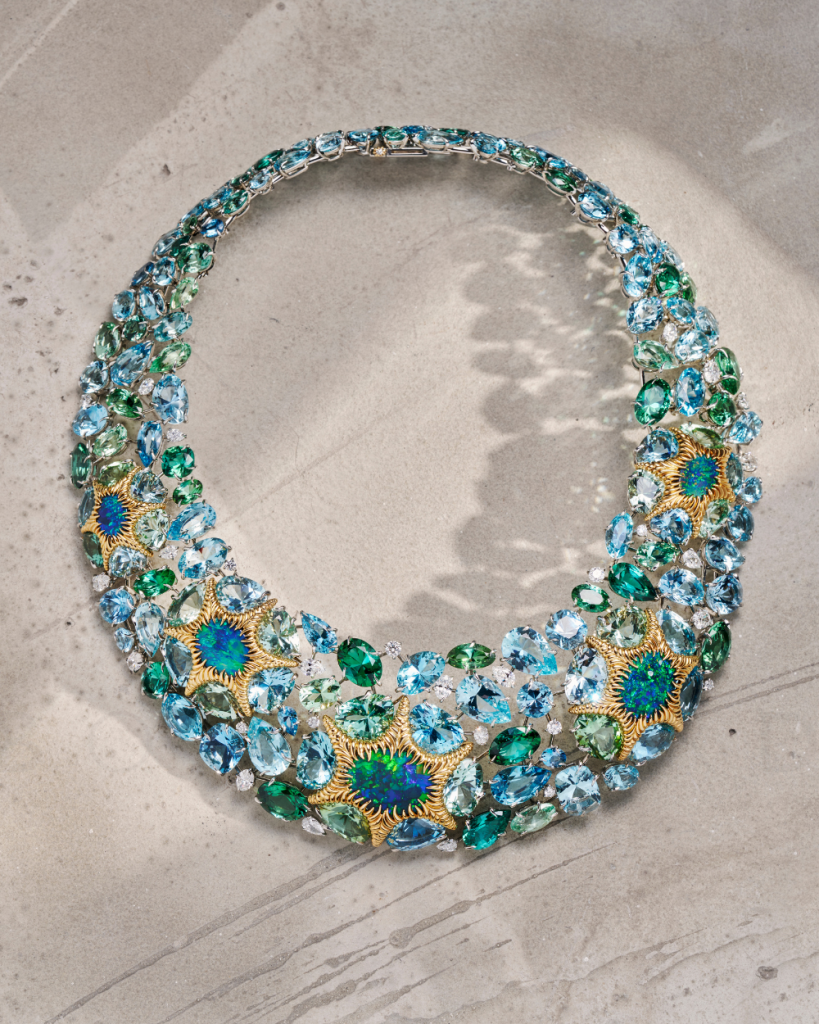
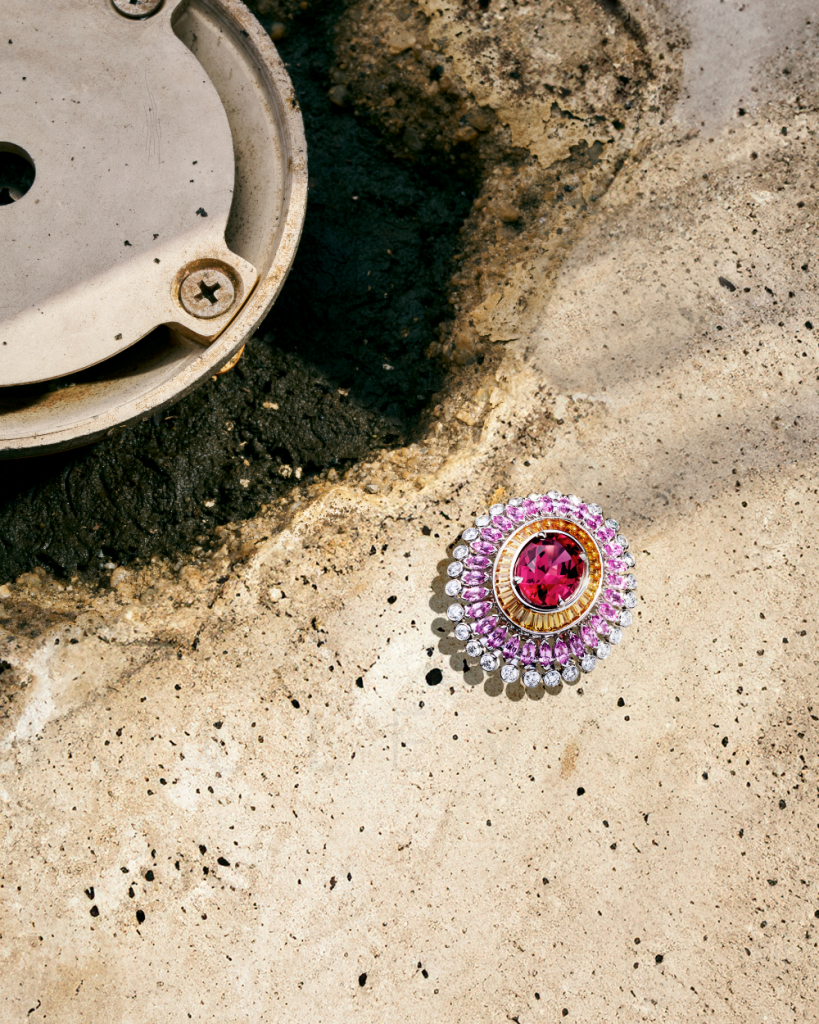
Left: Necklace in platinum and yellow gold set with black opals, aquamarine, beryls, tourmalines, and diamonds, by Tiffany & Co. Right: ‘Limelight Sunny Side Of Life’ ring set with a spinel, pink sapphires and spessartite garnets, by Piaget.
But what makes a stone collectable? Apart from the factors mentioned above, it’s also important to verify whether a gem has been colour-treated or heated. The majority of the stones on the market today have been treated. Tan asserts, “It’s very hard to get a clean material.” She gives the example of tanzanites, which exploded in the mid-2010s and are becoming increasingly ubiquitous: “Most tanzanites are heated and quite readily available in the market, so we have to find nice ‘gemmy’ ones with good saturation.”
Personal favourites
When we ask Tan and Reynolds about their favourite stones, they both hesitate to answer. For Reynolds, “It would be like asking me to pick my favourite child! I love them all for different reasons – it is the unique attributes of every gemstone and diamond that makes them more precious.” At the same time, Reynolds is also seeing renewed appreciation for opals: “Black opals, crystal opals, fire opals – and as I am a lover of opals, I’m thrilled! A wonderful example of this is the ‘Starburst’ collection in this year’s Céleste Blue Book – the opals are beautifully highlighted in [Tiffany & Co.’s chief artistic officer] Nathalie Verdeille’s exceptional jewellery, and our clients are embracing the ethereal nature of these works of art.”
Meanwhile, Tan says that Phillips sold a rare, 10.84-carat colour-change alexandrite chrysoprase from Brazil for HK$7,620,000 at a recent auction, surpassing its pre-sale estimates of $2.4m to $4.5m. Other stones that have caught her eye are pink sapphires and spinels.
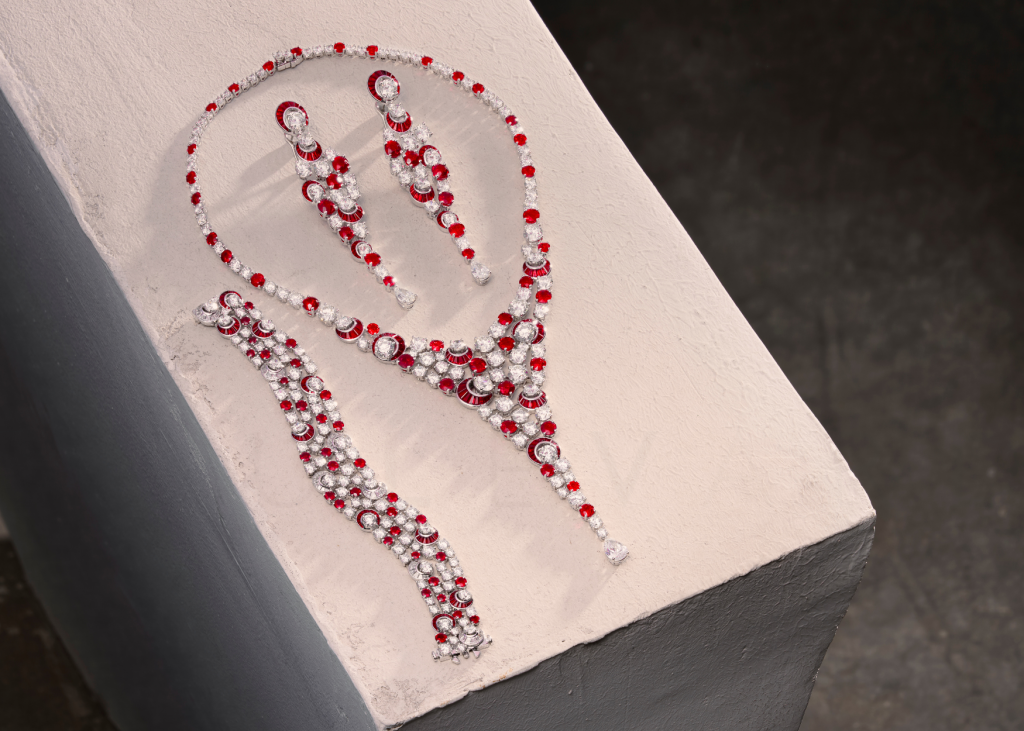
‘Suite’ set with rubies and diamonds, by Graff.
A growing market
It’s fair to say that this increased interest in coloured gemstones correlates to their increasing value. In a report by the Financial Times, Sean Gilbertson, chief executive of the world’s largest miner of coloured stones, Gemfields, said, “Coloured gems have bucked that trend [of falling commodity prices]. It’s one of the few mineral resources that have increased in price dramatically.” The same report quotes Dev Shetty, CEO of Fura Gems, a gemstone mining group: “the coloured gemstone market will hit $5b by 2030, up from $2b in 2012”. To put that in context, the natural rough diamond market has stagnated at $15b.
But beyond their economic value, gemstones evoke an emotional value. As Tiffany & Co.’s Reynolds puts it, “Gemstones are true miracles of nature, some almost as old as the earth itself. When collecting or investing in coloured gemstones, it’s important to remember that each piece has its own unique story and beauty.”
Read next:
